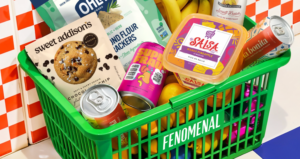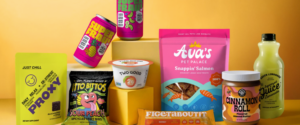- How to Set Up your CPG Business for E-Commerce Success - May 14, 2020
- 3 Costly Mistakes Entrepreneurs Make When Working with Co-packers - February 25, 2020
- Co-packer Costs? How much does it cost to get your food or beverage product produced? - April 8, 2019
Grocery buyers are busy, and you have one chance to make a positive impression – Do you know what it takes to convince them that your product is a great fit for their shelves?
Retail specialist and SF based food consultant, Allison Ball is here to help. She as laid out 4 helpful tips to get you ready to pitch to wholesale buyers.
Think through the following four topics to ensure that you’re ready to answer all of the buyer’s questions and get them to say YES! to carrying your brand.
1) Determine Product Fit
Do your research! It’s important to make sure you are the right product fit for the buyer that you are pitching. Ensure that you’ve done your homework and understand that it makes sense in their assortment.
- Is your product similar or different than other products that they carry?
- Where in the store would it be merchandised?
- What benefits would the store get from carrying your brand?
Remember, above all a buyer brings in new products to increase sales in a particular category. You need to show them how your product will do exactly that!
If, for example, you produce a new style of coconut water you might reach out to a buyer who has a store located next to a sunny park, known for its picnic crowd on weekends. You would then present the buyer with your fantastic sales numbers, showing how well you do at other stores that are similar in size, style, or location as well as a trend report on how coconut water is driving sales in the beverage category.
You can then highlight how your specific product will lead to increased sales in their refrigerated section, and you’ll win over that buyer in no time!
2) Know Your Pricing
Arguably one of the most important factores and there are multiple questions that you need to be ready to answer around pricing.
- How will the store price your item and hit their margin?
- Do you do buy-backs or guaranteed sales?
- Do you offer promotions or coupons?
- Do you pay for shipping or delivery, or do they?
Also, know exactly how much you are willing to negotiate. Have a clear pricing structure in mind before entering the conversation and know what areas you are willing to budge on in order to get the deal done. Don’t get overeager and promise low pricing just to get into the store, only to realize once you get home and run the numbers that you can’t sustain those prices.
In this instance, you could negotiate a lower priced opening order that was in place for a set period of time (say, 3 months), or coupons for that same initial period, to gain interest and drive sales.
Above all- work with a financial consultant who is fluent in packaged food products. It will save you down the line!
Your financials is not the place to wing it!
3) Promotional Materials & Support
Do you have an eye catching, effective sell sheet?
Heavy weight paper, double sided, with full color photos of your packaging is perfect. Make sure it contains all of the information needed for a buyer to make a decision on your brand without your being there. Make sure that your packaging is both professional and functional. It also needs to look good on the shelf!
Sometimes it’s good to provide shelf talkers. You know, those small, laminated signs that hang under your product on the shelf and highlight the taste, benefits, and story behind your brand. Smaller, independent retailers appreciate it when you make the shelf talker yourself and provide a physical copy and a PDF for them to reprint as needed.

Lastly, how often will you come and do demos? At the beginning you should expect to do it once a month, remembering that you interact with only a very small portion of that store’s customers in each three hour demo window that you do.
4) Have Your Logistics In Order
Make sure that you have all of the necessary logistics ironed out for your product before entering the meeting. For example, what are the order days & delivery days? What is the case count, and minimums? What is your shelf life? How will the retailer place and receive orders?
Remember that by using larger distributors, stores can receive deliveries multiple times a week from the same vendors. They expect you to compete with that timeline, and ideally you’re able to deliver once a week and on the same day weekly. Buyers want to be in a rhythm with ordering & receiving as it makes it easier for them to manage their inventory.
Think about the long term growth for your company...
You’d ideally want everyone to place orders on the same day, that way you can produce and package in bigger runs and then deliver later in the week. In this case, you could receive orders on Monday, produce on Tuesday, pack on Wednesday, and deliver on Thursdays and Fridays. Now this way you have your weekly schedule set up rather than scrambling every time an order comes in.
The Take Away
The more prepared you are, the more likely the buyer will agree to give your brand a chance in their store. Remember, you’ve got one chance to make a positive impression, so BE PREPARED!
If you can’t answer those questions above and need support in getting ready to pitch to buyers, (or have been pitching with little success!), let’s talk. I love strategizing with food businesses and ensuring that you’re fully prepared for those exciting, stressful meetings with wholesale buyers!

About Allison
Allison Ball is a food industry consultant in San Francisco who specializes in helping producers understand the in’s and out’s of wholesale through her one-on-one client work and online group course, Retail Ready. She works to help small and medium sized businesses figure out how to get their packaged product on the grocery shelf, and keep it there.
For more information on Allison Ball and her business, visit her website at Alliball.com.
(Source: blog.partnerslate.com)



